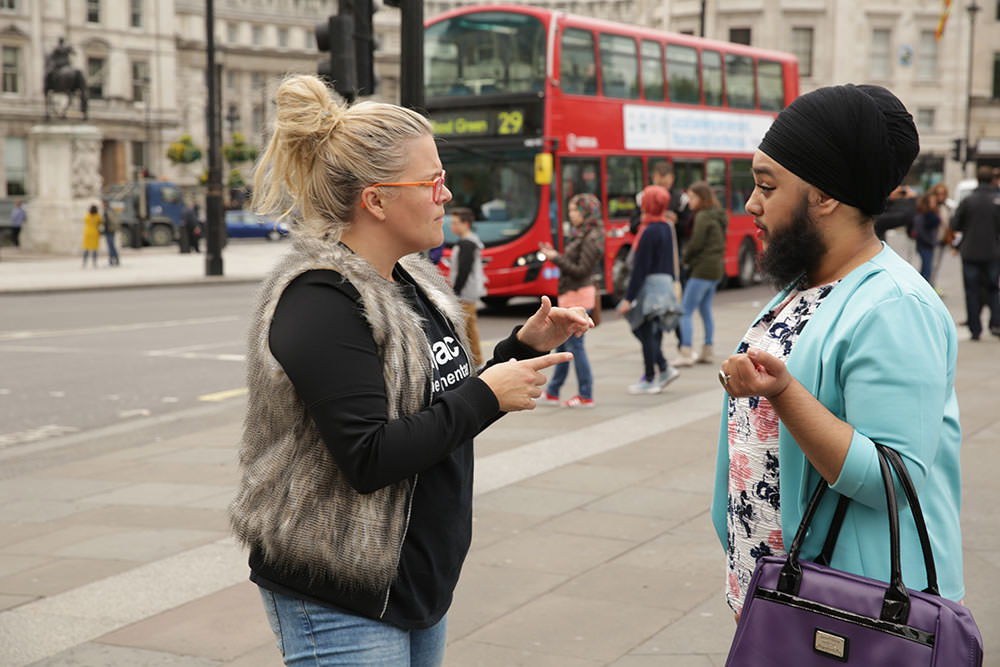The journey to Embrace
Three years ago, Taryn Brumfitt could never have thought she'd be a filmmaker, but when her personal story went viral, she realised Embrace was needed.
 Taryn Brumfitt
Taryn Brumfitt
When her before-and-after image went viral in 2013, body diversity activist Taryn Brumfitt spent a lot of time in the media spotlight – and discovered a problem.
These four-minute TV interviews barely scraped the surface of the issue, before Brumfitt was wheeled away for an ad break.
“I was frustrated that either the message wasn’t getting conveyed in the way I wanted it to, or I was getting asked questions that weren’t enabling me to say the things I needed to,” the mother-of-three says.
“I’ve been a photographer for ten years and I am a natural storyteller so I thought I could bring them together and in a very nonchalant way said,
‘I’ll just make a documentary, how hard could that be?’
“I then of course spent the next years understanding exactly how hard that was.”
When it came to financing, Brumfitt says there were some obvious and easy choices she could have made from the beginning.
“As in a corporate alliance,” she says.
“After all of those media interviews I had many discussions with companies that wanted to align their brand with the body image movement, so that was certainly a road and avenue that was open and would have been easy.
“But I just thought I had to do this on my own two feet and keep it authentic and very independent of anyone else’s intentions.”
Which is where crowd-funding platform Kickstarter came in.
The 60-day campaign to raise $200,000 started on May 10, 2014.
They reached their target on day 12 and the number continued to rise. By the end of the campaign nearly 9,000 people had raised $331,000.
But even that amount ended up not being enough, because the scale of Embrace was changing.
“I’m sure I could’ve made a film with that money and I would’ve been able to stay in Australia and maybe gone to one or two different places, but because of the response, with 7,000 emails and messages from people coming in and contacting me, 23 million views of the trailer and the amount of support across the globe, I just had to change the concept of what it was going to be.”
It meant that Embrace would now have Brumfitt not just travelling around Australia, but the world, to interview people – and particularly women – about their body-image stories. In the end, everyone from Mamamia founder Mia Freedman, to actress/presenter Ricki Lake help uncover reasons and solutions behind body-hating.
 Taryn on the ground in London
Taryn on the ground in London
In order to achieve this, more support ended up arriving in the form of investment from Screen Australia, South Australian Film Corporation, philanthropists, business and celebrities.
“Having funding and that financial assistance from Screen Australia gave the film that production value and allowed us to travel to places of the world that we wouldn’t have been able to get to,” she says.
“So we’ve been so incredibly grateful for their contribution and the South Australian Film Corporation as well. The film is what it is because of that support.”
Although it wasn’t just investors that got Embrace to where it is.
Brumfitt says she is the first to acknowledge that her team of producers, including Anna Vincent and executive producers Timothy White, her husband Mathew Brumfitt and German actress Nora Tschirner (who is one of the documentary interviewees), were a huge part of making Embrace a reality.
For Brumfitt and Vincent, the meeting was serendipitous.
The pair met at their respective children’s karate Christmas party, where they discovered they grew up in the same suburb, and the same street.
Brumfitt, who had been filming Embrace for just over a month with cinematographer Hugh Fenton, asked what Vincent did. When the reply came – “film producer” – it was truly as if the stars were aligning.
“At that stage I’d shot 40 days on my own and I was starting to go into territory of the unknown, in terms of clearances, archives, what I could and couldn’t say. It was becoming big for me to manage on my own with one other cinematographer,” she says.
Vincent came on board, along with White, her business partner.
One of the biggest challenges for Brumfitt was after the shoot, which interviewed people in countries including the United States, Canada, Germany, France, the United Kingdom and the Dominican Republic, when the editing began.
“We had so much footage. And 23 weeks felt like a really long time to be sitting in a room and going over and over the same footage,” she says.
Editors Bryan Mason and Lindi Harrison worked with Brumfitt to shape the footage into the 90-minute documentary it is today.
Now on the other side of it all, Brumfitt says her inexperience was perhaps a good thing, because she had nothing to compare it to.
“It’s probably a really good thing coming in as green as I was making this film, because of course I would do it again, but I would never ever just say to anyone, ‘yeah just make a film’. I have so much respect for filmmakers,” she says.
“And I guess one of the really lovely things is I made this film for women, not for recognition, but it’s been really lovely to be embraced by the film industry and that it’s a film that’s been deemed worthy enough to premiere at Sydney Film Festival and to be invited to New Zealand International Film Festival.”
But despite the positivity, there has still been some controversy.
Embrace was hit with a MA15+ rating from the Australian Classification Board, because a sequence that depicts close-up images of vaginas was deemed “strong in viewing impact” and included “protruding labia”.
Brumfitt says this sends the wrong message about our bodies.
“It needs to be there. There are 12 seconds, they are still images, it’s informative, it’s educational,” she says.
“It wasn’t put there for shock factor or to be rude or crude. It’s come off the back of a conversation with a Beverly Hills cosmetic surgeon about labiaplasty and how women and young girls are turning to surgery to cut off bits of their anatomy because all they see is one type of vulva.”
She said they will appeal the decision.
Brumfitt hopes it will be overturned and particularly that it will be available for people of all ages to see, so that the body-shaming can stop.
“The theatrical version should be the version kids see in school,” she says.
“We’ve spoken to education specialists who are writing study guides for release and Janice Atkins (who wrote the guides for Gayby Baby and That Sugar Film) she’s seen it and thinks it’s incredibly important for it to remain in the film, not to be taken out.
“Because what message does that send. It’s even more shame.”
Embrace is out in cinemas now.

What to read next
Four sets of Australian producers talk about how they raised the money to tell a story using the documentary form.
17 May 2016
Screen Australia